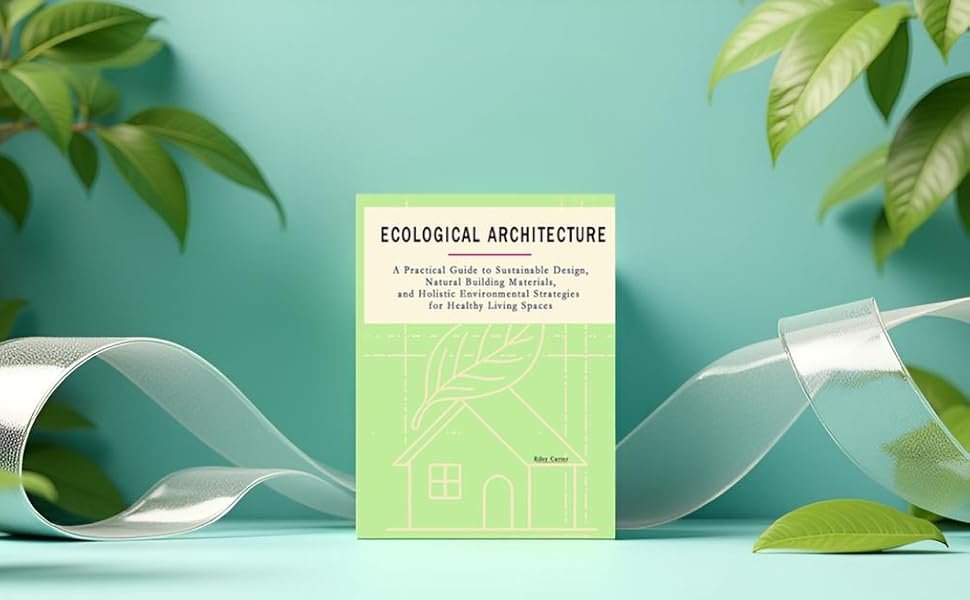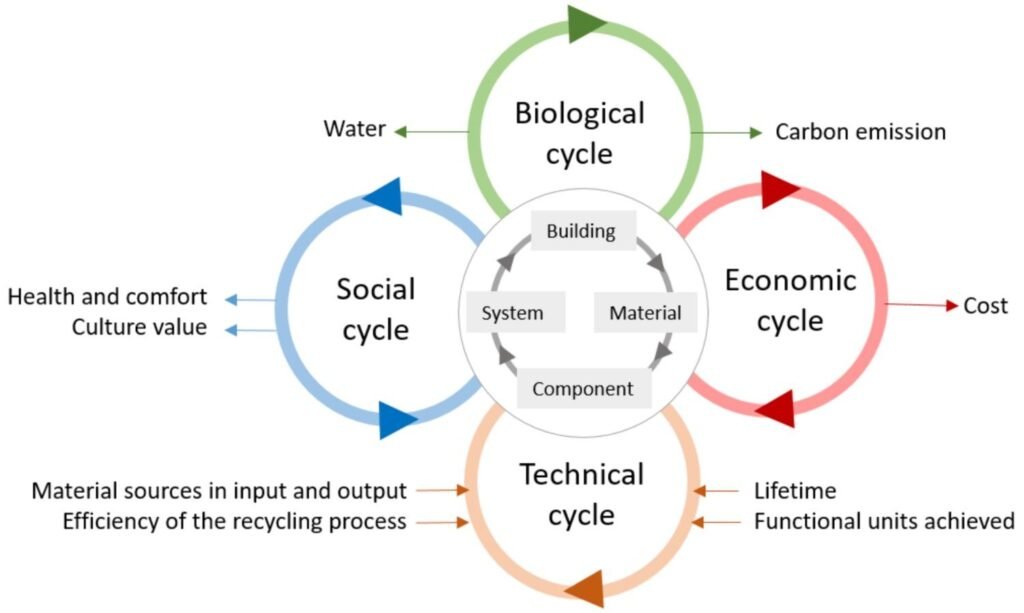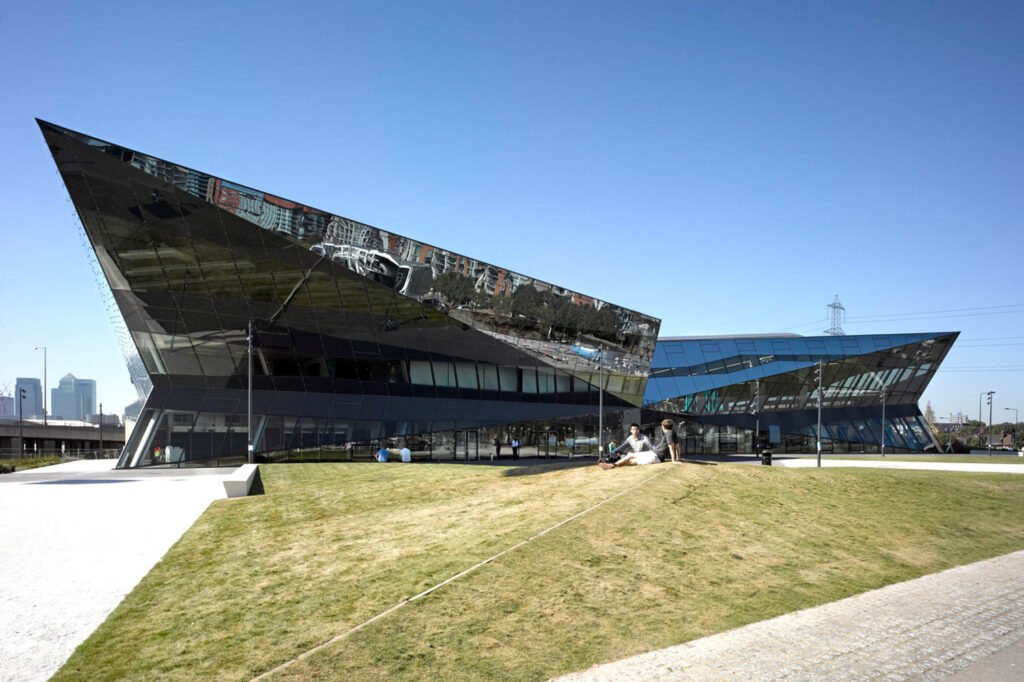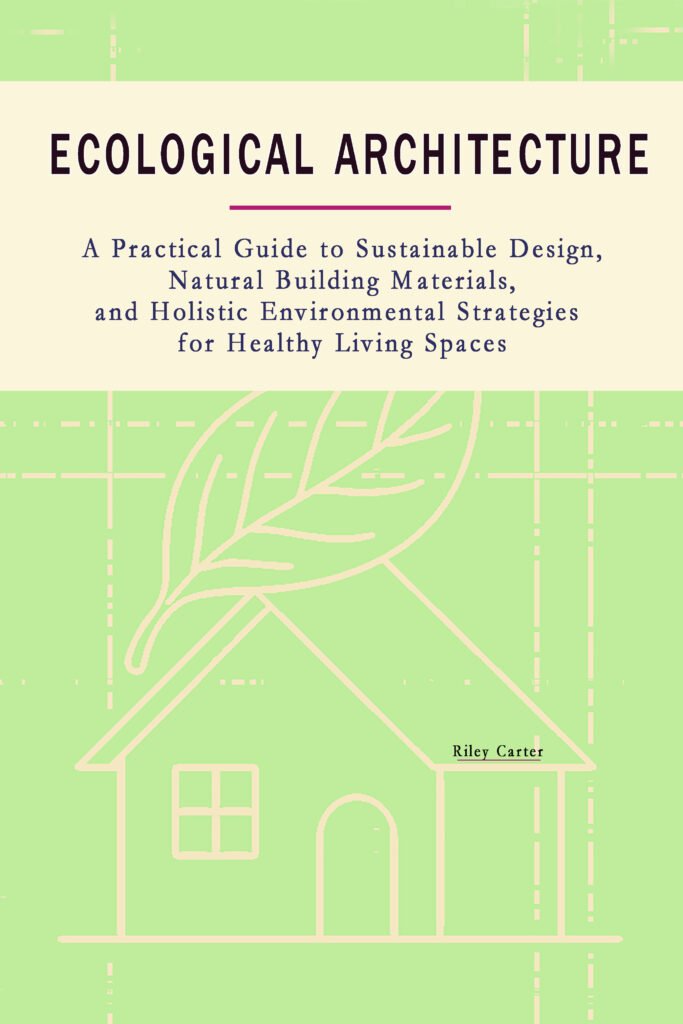When I set out to write Ecological Architecture, it was clear to me that sustainability needed to mean more than energy efficiency. Passive House is a powerful tool—but it’s only part of a broader ecological framework that considers land, water, materials, and human health as interdependent systems. This book invites architects, students, and builders to go beyond performance metrics and engage with the full ecology of design—how buildings can heal rather than just reduce harm.

Bring stability, efficiency, and innovation to your architectural vision.
Ecological architecture begins with understanding place. That’s why this book opens with site and contextual analysis: sun paths, wind patterns, topography, and the microclimates that shape design opportunities. Whether in dense urban infill or rural landscapes, the goal is always integration—working with natural systems to reduce mechanical demand and enhance environmental connection. Passive solar gain, natural ventilation, and native planting aren’t add-ons; they’re fundamentals of architectural intelligence.
From there, the book explores how materials and assemblies can embody ecological values. I provide a detailed look at low-impact construction methods, natural and recycled materials, and life-cycle thinking. Whether designing a green roof, insulating with bio-based products, or choosing finishes with zero-VOC emissions, each decision is framed by long-term resilience, disassembly, and carbon impact. Circularity—designing for reuse and recovery—is not treated as a future ideal but a present necessity.
Interior environments are just as critical. I devote a full section to environmental systems that support human health: daylighting, indoor air quality, moisture management, and thermal comfort without reliance on high-energy systems. Just as importantly, the book connects these interior goals to broader resource strategies—rainwater harvesting, gray water reuse, and composting—so that buildings operate not as consumers, but contributors to their ecosystems.
Ecological Architecture closes with design tools, certifications, and case studies that illustrate how these principles come together. From LEED to WELL to regenerative frameworks like Living Building Challenge, I provide a roadmap for choosing appropriate metrics and strategies without letting bureaucracy override creativity. This is a book about building with integrity—structures that respond to climate, respect their context, and promote both planetary and personal well-being.
Riley Carter
Understanding Ecological Architecture
Ecological architecture is more than a stylistic choice or a trend—it’s a shift in the foundation of how we design, build, and inhabit space. Unlike conventional green design, which often reduces sustainability to energy savings or certifications, ecological architecture sees the built environment as part of an interdependent system.
As Riley Carter puts it, “Sustainability needed to mean more than energy efficiency.” His book Ecological Architecture reframes buildings not as isolated objects but as active participants in their ecosystems—shaping and shaped by land, water, air, and life.
Beyond Efficiency: The Ecological Framework
While Passive House design remains a powerful tool for reducing energy consumption, it’s just one piece of a broader ecological puzzle. Carter’s framework begins with the site—its sun paths, wind flows, topography, and microclimates—and asks architects to respond with the land, not in spite of it.
This involves shifting from machine-reliant systems to natural passive strategies:
Passive solar gain to optimize winter heat
Natural ventilation aligned with prevailing winds
Shading and planting to reduce mechanical cooling loads
Local material use to cut embodied energy and transport impact
These aren’t supplementary—they’re core architectural tools in ecological design.
Working with Place: Site Analysis and Climatic Intelligence
One of the foundational ideas in Ecological Architecture is to begin every design with contextual awareness. Carter outlines how solar geometry, seasonal wind, water flow, and vegetation patterns can—and should—drive early decisions.
Instead of forcing mechanical systems to solve poor design, ecological architecture seeks harmony between form and climate. This results in buildings that:
Require less energy
Feel more comfortable year-round
Foster stronger indoor-outdoor relationships
Carter emphasizes integration over compensation—designing with climate, not fighting it.

Materials That Matter: Life Cycle, Impact, and Recovery
A critical section of the book addresses material selection, challenging readers to go beyond aesthetics or availability.
Key criteria include:
Embodied carbon: Measuring the total CO₂ footprint of extraction, production, and transport
Toxicity: Prioritizing zero-VOC finishes, adhesives, and paints for human and ecological health
Circularity: Choosing components that can be reused, repaired, or composted
Natural materials: Embracing wood, straw, cork, hempcrete, clay, and recycled steel or glass
Carter doesn’t idealize these—he lays out the trade-offs and logistical realities, including availability, sourcing constraints, and detailing requirements.
He also addresses construction assemblies with deconstruction in mind: How will this building come apart? Who will reuse it? What legacy will it leave?
Healthier Interiors through Ecological Systems
The health of a building’s occupants is central to ecological architecture.
Riley Carter devotes an entire section to interior environmental systems, explaining how healthy indoor environments depend on:
Daylighting: Maximizing natural light while avoiding glare and overheating
Indoor Air Quality (IAQ): Controlling pollutants through material choice, filtration, and ventilation
Moisture Management: Preventing mold and decay through breathable assemblies and proper detailing
Thermal Comfort: Designing comfort without high-energy HVAC systems
He highlights feedback loops between resource strategies and interior quality. For example:
Rainwater harvesting reduces municipal demand and supports plant-integrated cooling
Composting toilets eliminate water waste while producing soil enrichment
Graywater reuse systems close the loop between hygiene and irrigation
These are not high-tech gimmicks—they’re intelligent, low-energy systems rooted in ecological thinking.
Regenerative Thinking: Buildings That Give Back
While many sustainability frameworks focus on minimizing damage, Carter encourages architects to go a step further—toward regenerative architecture.
A regenerative building does not merely reduce energy use; it actively supports ecosystems, improves biodiversity, and enhances its surrounding community.
Examples include:
Living roofs and green façades that cool cities and support pollinators
Buildings that clean air or filter stormwater
Projects that generate more energy than they consume
Community buildings that restore land and harvest resources responsibly
Ecological architecture isn’t just about conservation—it’s about repair and reciprocity.

From Principles to Practice: Tools, Metrics, and Certifications
Recognizing that ideals alone don’t build good buildings, Ecological Architecture equips readers with a toolbox of frameworks, standards, and strategies:
LEED, WELL, BREEAM: Popular rating systems that promote measurable sustainability
Living Building Challenge: A performance-based model for net-positive design
Sustainable Sites Initiative (SITES): Focusing on land use, ecology, and landscape integration
Life Cycle Assessment (LCA) tools: For evaluating cradle-to-grave impact
Importantly, Carter warns against letting bureaucracy override creativity. These tools are means, not ends—and ecological thinking must remain agile, local, and adaptive.
Real-World Projects and Lessons
The book includes a series of case studies showing how ecological principles have been applied in:
Urban infill projects with vertical gardens and shared water systems
Rural passive homes that use cob, straw bale, and rain-fed gardens
Public buildings that function as learning ecosystems, integrating classrooms with food forests, solar labs, and compost loops
These examples demonstrate feasibility and flexibility—proving that ecological architecture is not a luxury, but a necessity, even under budget and regulatory constraints.
Ecological Architecture Is Not a Style—It’s a Mindset
At its heart, ecological architecture isn’t defined by aesthetics, labels, or certifications. It’s about values, systems thinking, and long-term vision.
“This is a book about building with integrity—structures that respond to climate, respect their context, and promote both planetary and personal well-being.”

Ecological architecture offers more than a response to environmental crises. It offers a roadmap to build differently—with empathy for the land, intelligence in design, and responsibility for the future.
By embracing ecology not as a constraint but as a creative framework, architects can shape environments that are:
Technically excellent
Human-centered
Ecologically integrated
Economically sound
Emotionally resonant
Ecological Architecture by Riley Carter isn’t just a call to action—it’s a guide to making buildings that belong.
